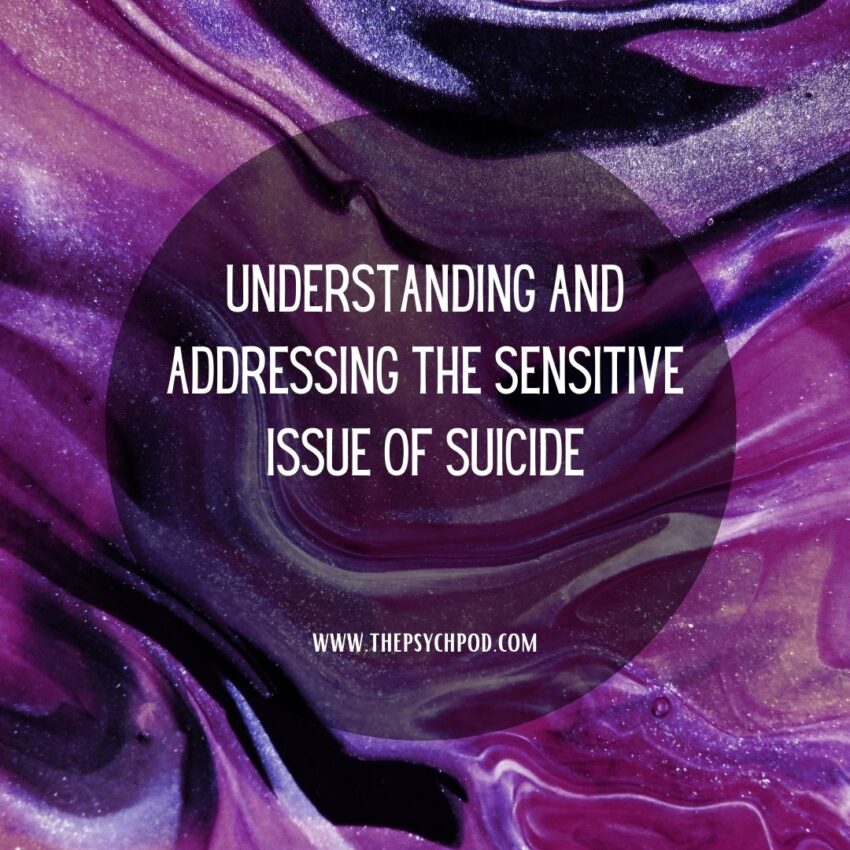Suicide is a deeply sensitive and complex issue that affects individuals and communities around the world. It’s a topic that deserves thoughtful discussion and compassionate understanding. In this post, we’ll explore the realities of suicide, risk factors, warning signs, and how to support those in need.
The Reality of Suicide
According to the World Health Organization, nearly 800,000 people die by suicide each year, making it a global public health concern. It’s essential to acknowledge that suicide can affect anyone, regardless of age, gender, race, or background. While it’s challenging to discuss, raising awareness and understanding is crucial to reducing its devastating impact.
Risk Factors
Suicide is rarely the result of a single cause. It typically results from a combination of factors. Those factors can include:
Mental Health Challanges: Depression, Bipolar Disorder, Substance Use Disorders, PTSD, Schizophrenia, Autism, Borderline Personality Disorder, and other mental health disorders, brain diseases, and brain injuries are associated with an increase risk of suicide. Co-occurring disorders can also put an individual at an elevated risk for suicide. Having a family history of suicide and psychiatric illness are also known risk factors for suicide.
Social Isolation: Loneliness and lack of social support can exacerbate feelings of hopelessness and despair.
Life Stressors: Significant life events such as loss, financial difficulties, legal problems, divorce, relationship issues, abuse, family conflict, severe and chronic bullying, new or existing chronic illness, and trauma can be triggers.
Access to Means: Easy access to lethal means, such as firearms or medications, can increase the likelihood of a suicide attempt.
Warning Signs
Recognizing the signs of someone in emotional distress is crucial. These signs may include:
Talking about Suicide: Verbalizing or writing about thoughts of suicide or self-harm. As well as talking about feeling increased hopelessness, helplessness, or stating that they “can’t take it anymore.” Talking in absolutes and making statements like, “I’m never going to get better,” “Nothing is ever going to change,” or “No one can help” are also signs that someone may be thinking about suicide.
Social Withdrawal: Isolating themselves from friends and family.
Extreme Mood Swings: Severe mood changes, including sudden calmness after a period of depression.
Changes in Behavior: Drastic shifts in behavior, appearance, or routines.
Giving Away Belongings: Disposing of possessions or making arrangements as if preparing for the end.
Support and Intervention
If you suspect someone may be at risk of suicide, here are steps you can take:
Listen Compassionately: Provide a non-judgmental and empathetic space for them to express their feelings.
Encourage Professional Help: Suggest speaking to a mental health professional or a crisis hotline.
Remove Access to Lethal Means: If safe to do so, help restrict access to any potentially lethal items.
Stay Connected: Offer ongoing support and check in regularly.
Involve Trusted Individuals: Seek assistance from friends, family, or professionals who can provide guidance and support.
It’s vital to remember that you don’t have to handle this alone. Reach out to mental health professionals or crisis hotlines for advice and support.
Suicide is a heart-wrenching issue that demands our attention and compassion. By fostering understanding, recognizing warning signs, and providing support, we can play a significant role in helping those who may be struggling. Together, we can work towards a world where individuals feel heard, valued, and supported on their journey toward mental well-being.
If you or someone you know is struggling with thoughts of suicide help is available by calling or texting the suicide and crisis lifeline at 988 for free and confidential support available 24 hours a day 7 days a week.
Dr. Velmi, Psy.D.

Very good article. I absolutely love this site. Thanks!